After a grumpy windy start our summer was warm and settled and as a bonus there was an abundance of butterflies. In addition to swarms of cabbage whites and lots of yellow admirals, there were quite a few Monarchs, and this year we had swan plants for the fussy caterpillars - they only eat milkweed and the swan plant is the one that they feed on here. It's the one garden plant that people grow just for it to be eaten by caterpillars!
The Monarch butterflies would flit quickly through the garden, feeding and depositing eggs. They were hard to catch in the act, but here is one - you can see another was there before her.
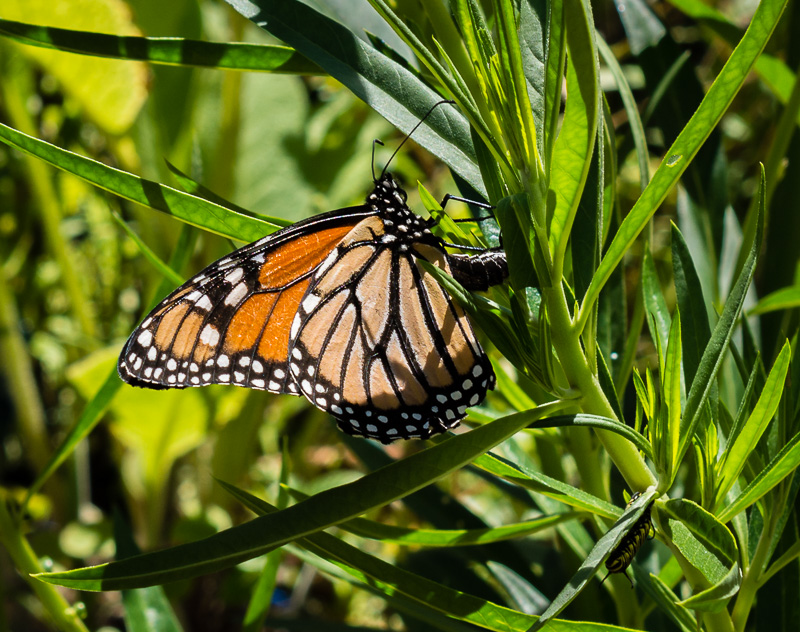
A Monarch egg is such a tiny dot on the leaf.
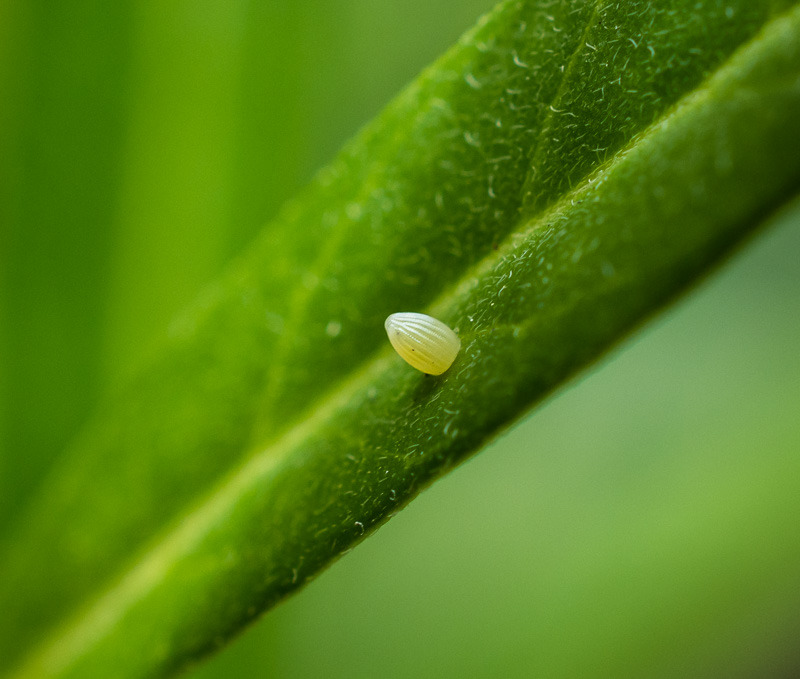
Soon a glimpse of black appears - it is the head of a caterpillar about to emerge.
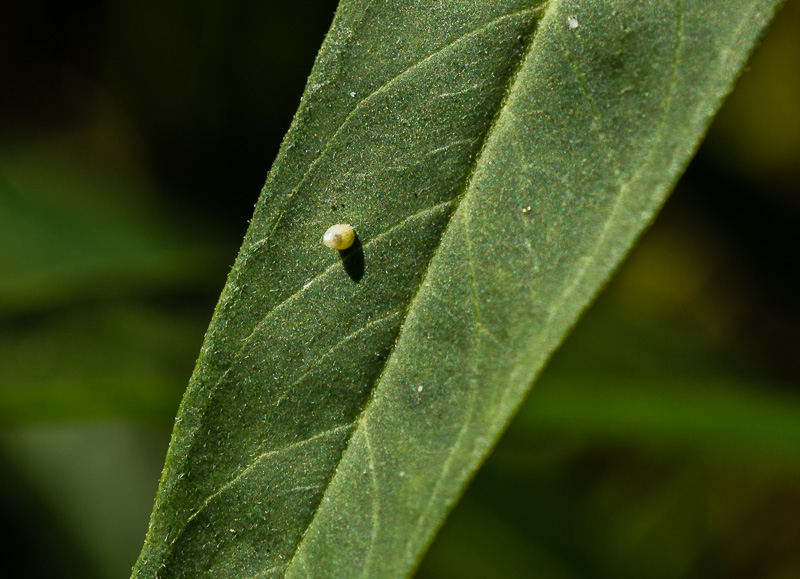
Teeny tiny and hungry - at first the little larvae/caterpillars nibble on the leaf undersurface.
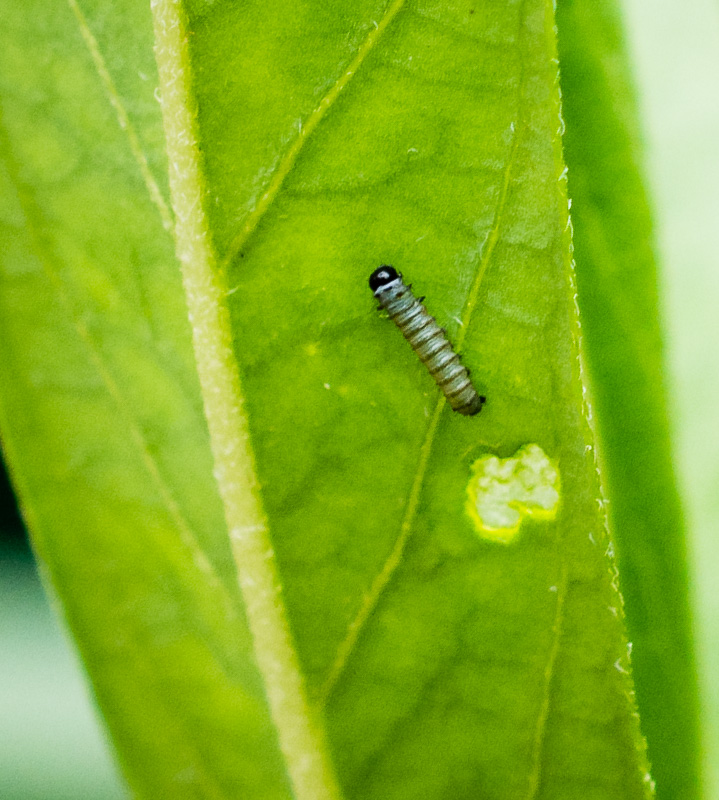
They start growing and moving,
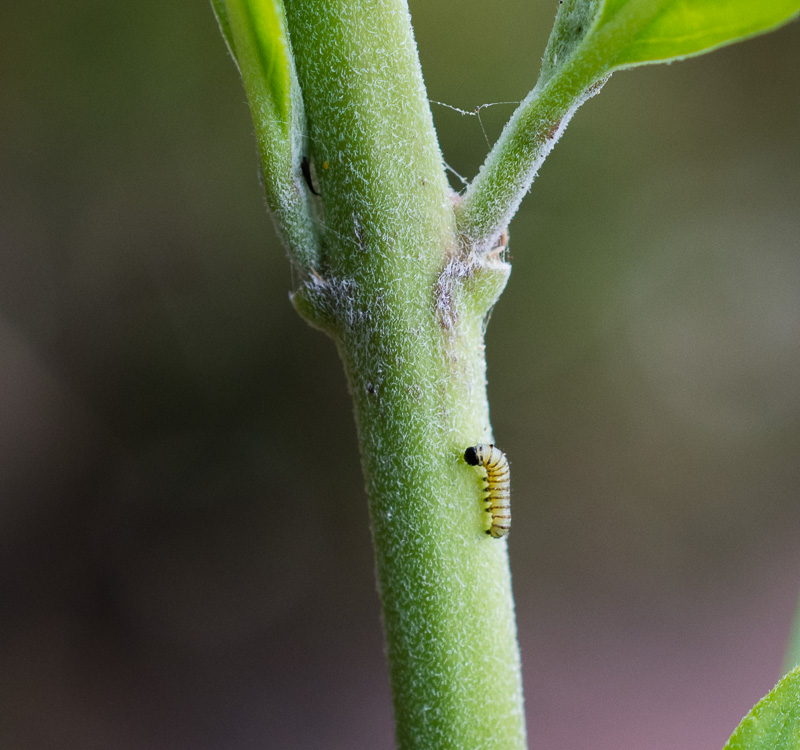
and eating till they need to shed their skin in order to grow. The moult reveals the next stage (instar) - the distinctive yellow stripes and little feelers are beginning to show.
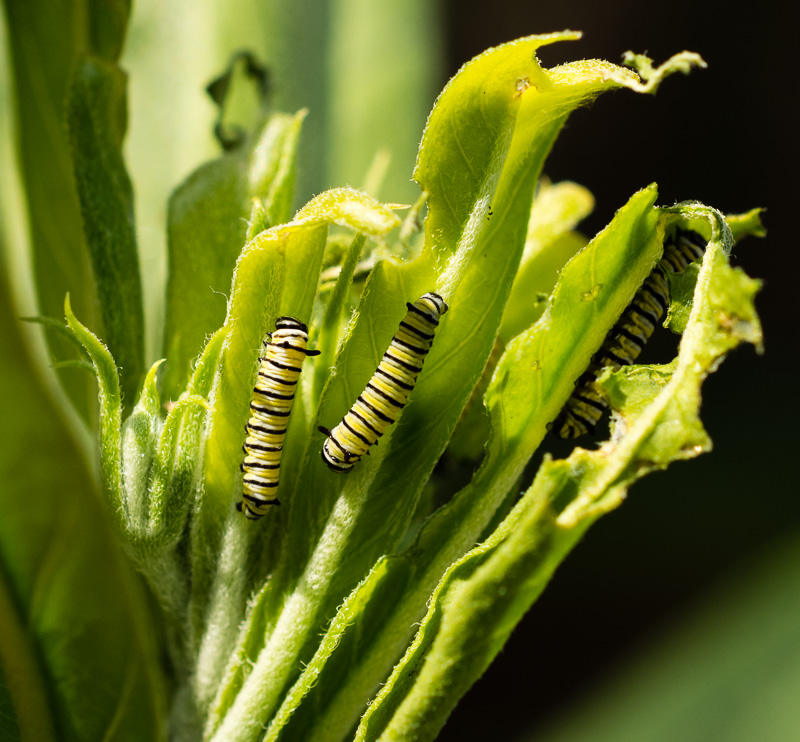
Onwards they go, consuming the tender new leaves of the swan plant, but graduating soon to larger ones - there's a long way to go to get up to big brother/sister size,
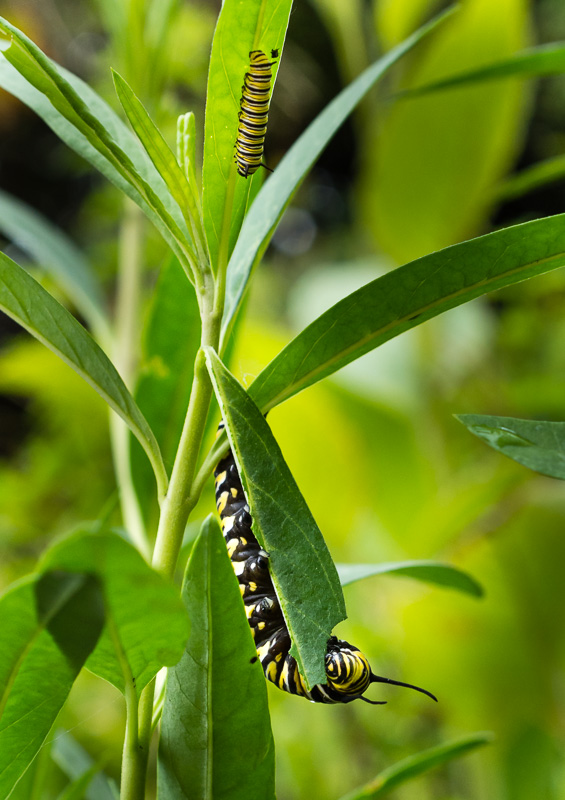
shedding skins to make room for the rapid expansion,
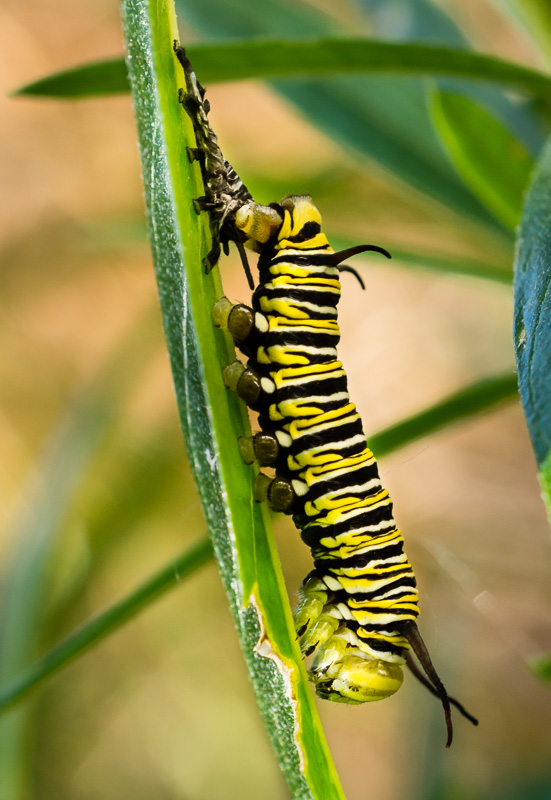
when the leaves are gone, eating the stems, until it's time for the almost magical change.
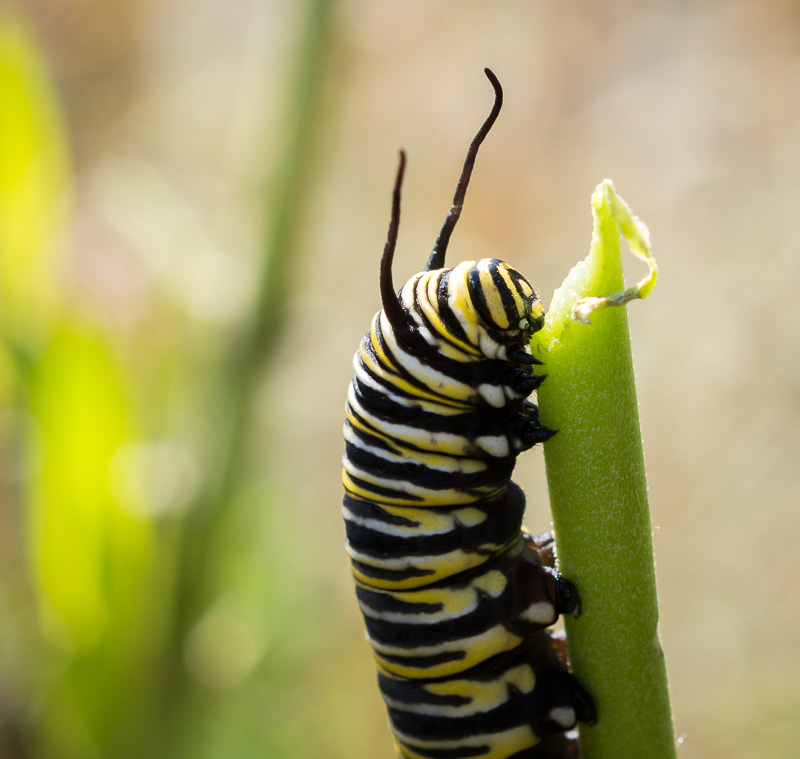
Time to attach itself - hanging in a J-shape,
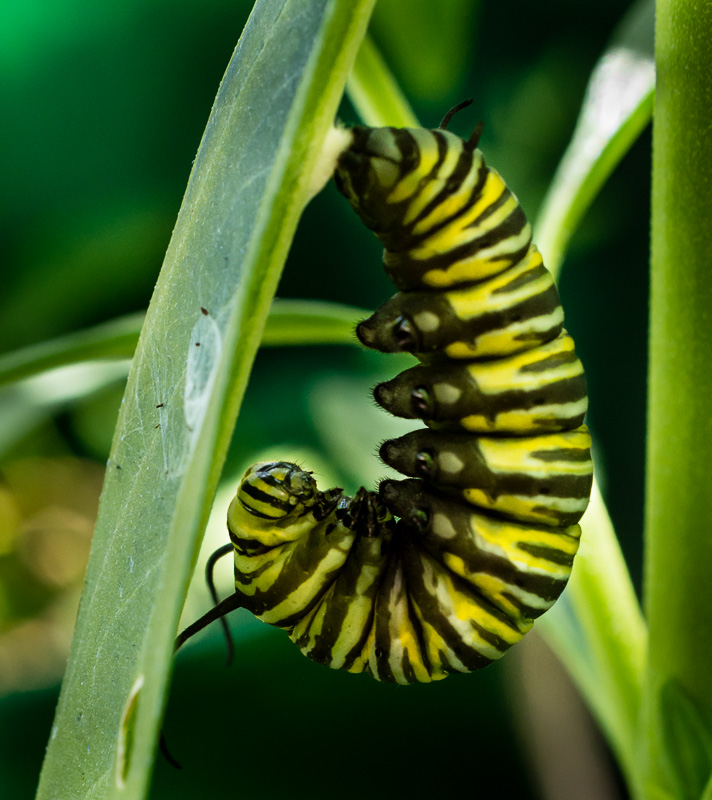
it sheds its skin, changes shape and colour,
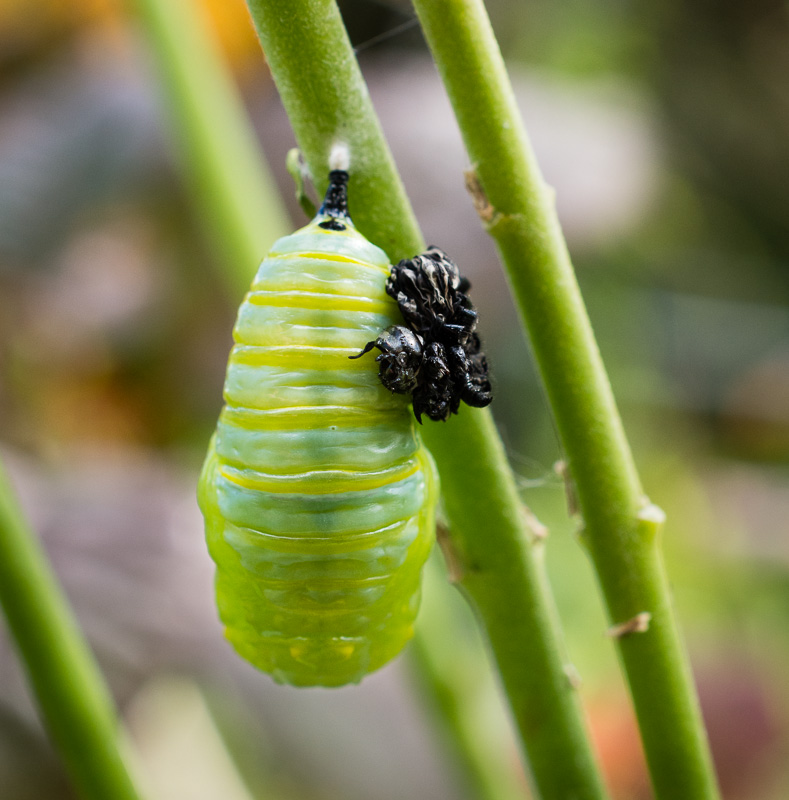
making a beautiful green chrysalis,
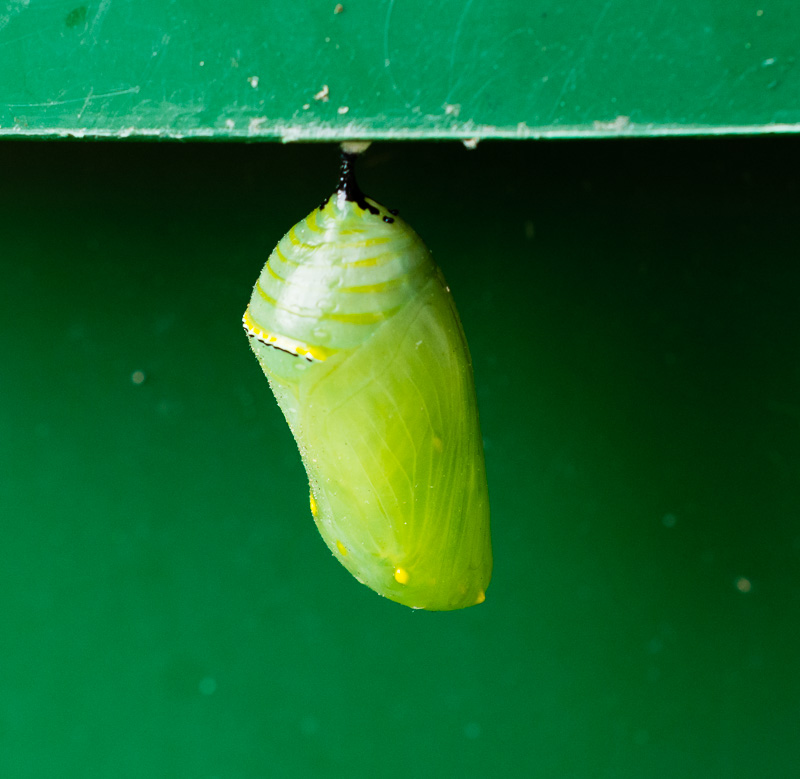
maturing, (here decorated with raindrops)
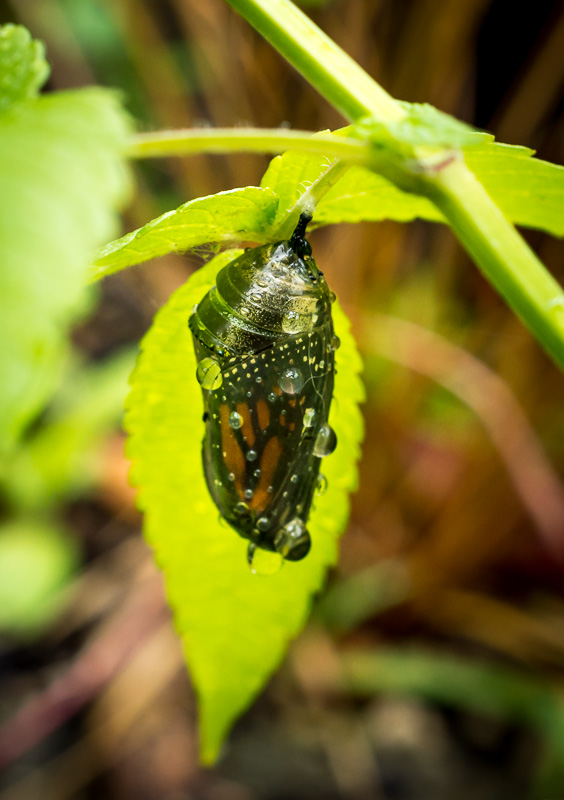
emerging,
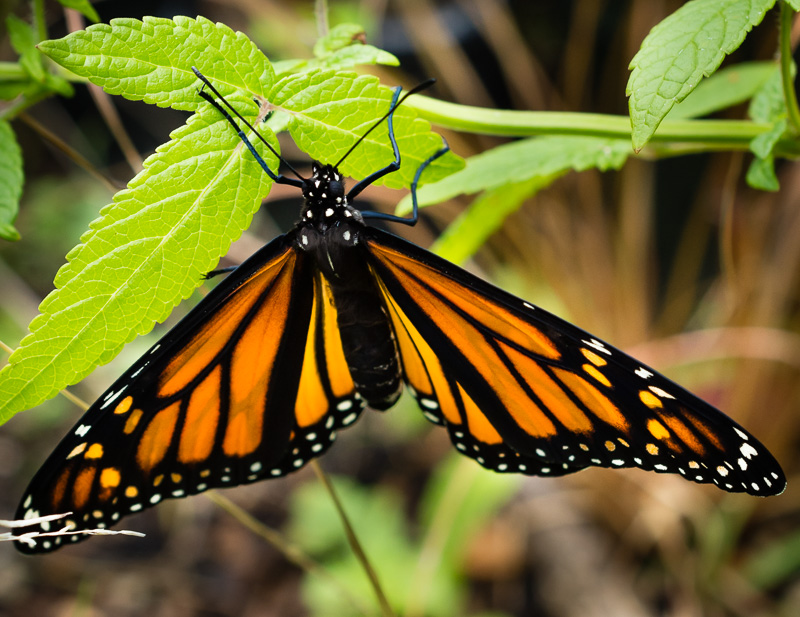
pumping up its wings,
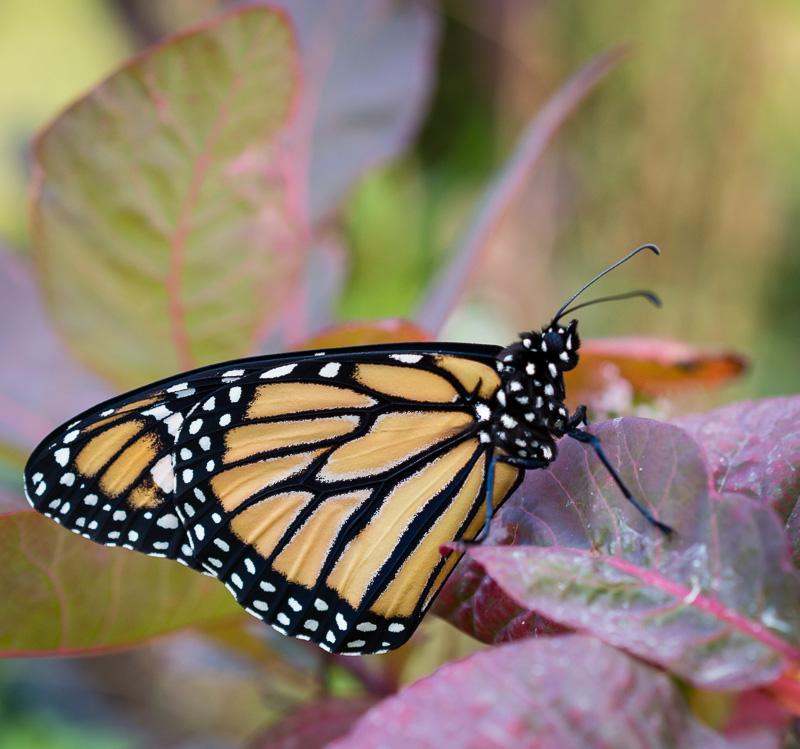
leaving a shell behind.
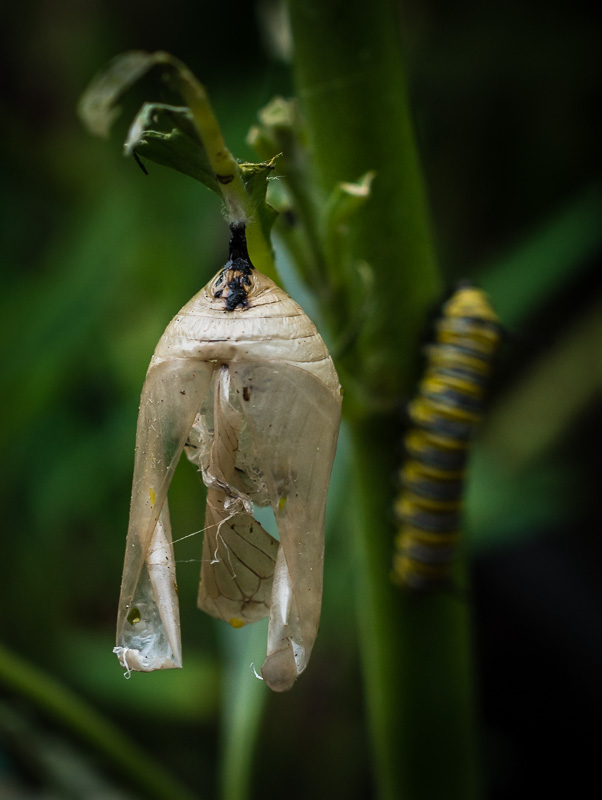
I had to get more swan plants to manage the hungry hordes, and did so with pleasure. Favourite surprise - the way the little tentacles/feelers on the caterpilars wiggle while the caterpillar is eating - very expressive.
The last butterfly to emerge was just ahead of the cold snap that announced the end of summer. Monarch butterflies overwinter in warmer areas of the country. In the northern hemisphere they manage to fly from Canada to Mexico to overwinter, so there is some hope that even the last Monarch that emerged in our garden managed to escape from our wild south coast.